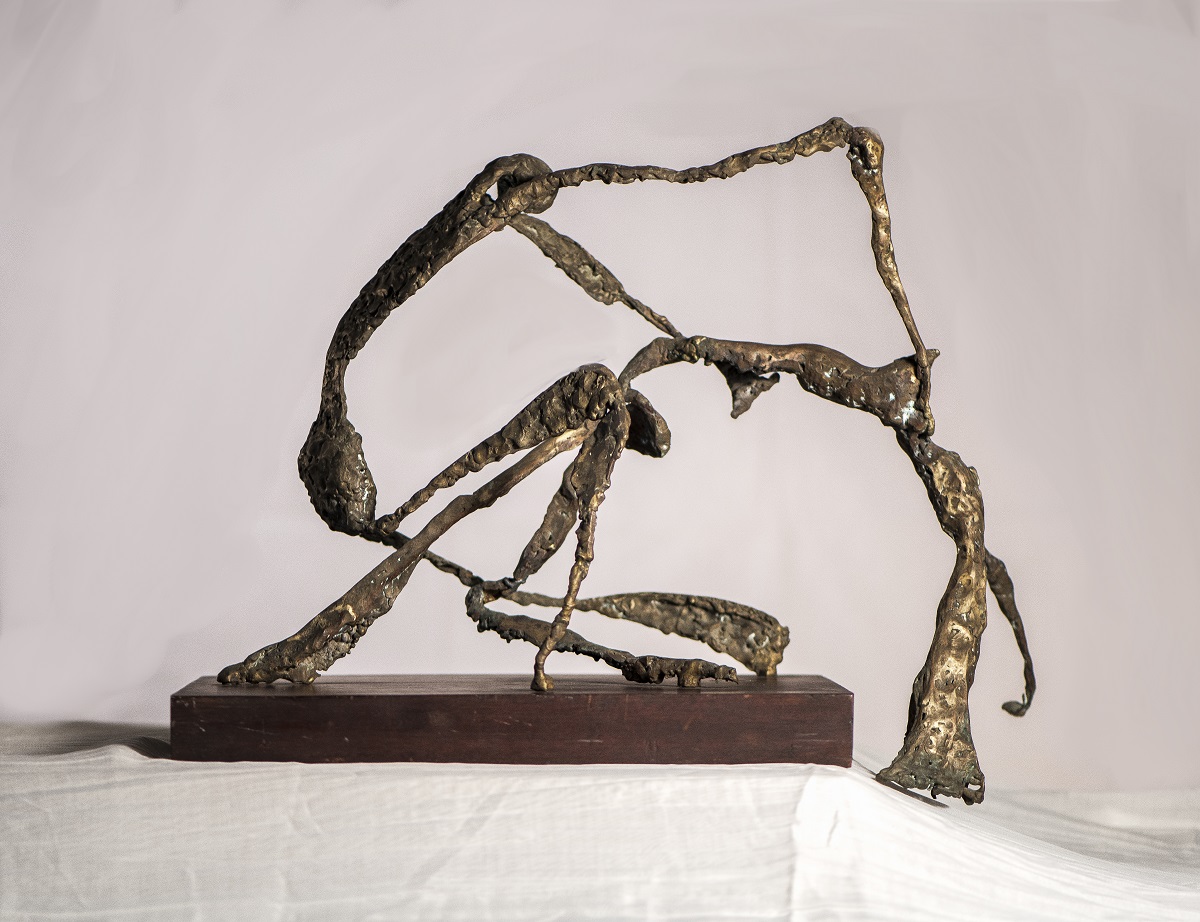The Rhythmic Art of Ronald Trahan
Capturing music in sculpture
Published: November 29, 2020
Last Updated: February 28, 2021

Photo by Bennet Rhodes
Ronald Trahan, The Dip. Mixed metal.
The West Baton Rouge Museum recently acquired a number of Trahan’s iconic, musically-inspired mixed-metal sculptures to help interpret the rich blues culture of the region. Trahan found inspiration in childhood trips to New Orleans and in his brother, Gussie Trahan, a saxophone player.
The Dip is his remembrance of his parents dancing. Trahan recalls his dad dancing in the kitchen before going out to juke joints and fairs. Sometimes the elder Trahan dipped an imaginary partner while waiting for his wife to get ready. Other times his parents danced together—something that greatly impressed the young Trahan.
Raised across the river in East Baton Rouge, Trahan attended Capitol High and Southern University, where he met his mentor, Frank Hayden. Hayden told his student that he works better in bold. Trahan agreed, and to this day he enjoys working with large figures.
Fresh out of the service in 1969 and attracted by the freedom and wildlife of his father’s native West Baton Rouge, Ronald Trahan moved to Port Allen to open his art shop on Rosedale Road, not far from his grandmother’s shotgun house. Trahan enjoyed the West Baton Rouge music scene and recalls evenings spent at juke joints such as the White Eagle and the Curve Inn.
When asked, Trahan describes himself as “independently poor.” He explained, “The money made a difference, but it didn’t make a difference. But you had the chance to do what you want. I’m about doing good art and enjoying it. When I look back, I can say, ‘That’s good!’ And that makes me feel good.”
—Angelique Bergeron
The West Baton Rouge Museum is open under social distancing guidelines. For details, please visit westbatonrougemuseum.com.
